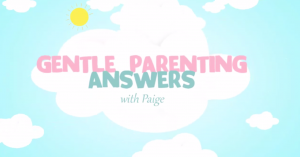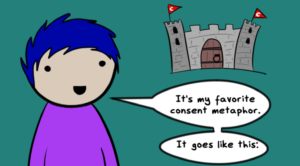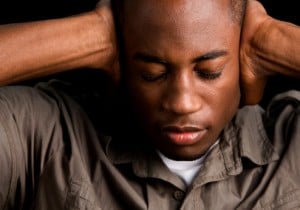
Credit: Daily Health Care Guide
I know that when my heart was broken, or when I didn’t get the grant I had worked so hard on, or even when my feelings weren’t taken seriously, I hid my hurt. I tried to perfect.
What I had learned over the years is that sadness was a weakness and it was best to look poised rather than bruised or irritable.
Best to seem healthier or present a plastic version than to reveal the real, hurting version of myself.
Best to pick up and move on, throw myself into work, signal to the outside world an image of strength and charm.
But inside, I felt fried, blitzed, scattered.
And at some point, I decided that I had had enough of that. It needed to stop. I needed to change.
I knew that if I wanted to feel differently, I was going to have to kick some old habits.
But I wasn’t sure what my image of emotional healthiness was.
So I started to explore for myself and here’s what I came up with.
1. A healthy sense of ego and boundaries
We all may be familiar with Freudian theory, but let’s face it, theory is a lot to slog through.
So put simply, being emotionally healthy means we have to find the balance between the low and high ego.
- Low ego: Feeling powerless, victim, no sense of self, low energy, co-dependent, selflessness, worrier, overwhelming feeling of not being good enough, passive aggressive, guilty, favorite phrase may be something like “I should have” or “I have to”, easily manipulated.
- High ego: Feeling power hungry, identify outside of oneself, false self, self absorption, focus on accomplishment, dominating, overly aggressive, manipulative, having to have the last word.
- Balanced ego: Feeling responsible, reliable, having good self-esteem, confident, warmth in personality, sense of humor, understanding all facets of who we are, clear boundaries.
2. Mindful speech
Similar to how I had to identify where I was on the ego spectrum and then had to find the balance I had to do the same for how I communicated in the world.
Did I have underactive or overactive tendencies? What did the balance look like?
- Underactive tendencies: Fear of speaking, soft voice, difficulty putting emotion and feelings into words, shyness, quietness.
- Overactive tendencies: Talking too much (gossips), inability to listen, hearing but not remembering, dominating voice, defensive talk, interruptions
- Balanced qualities: Having a resonant voice, sense of timing, clear and direct communication of feelings and needs, good listener, speaking concisely, speaking slowly, enunciating, seeing silence as part of speech, observation without judgment.
3. Self-acceptance
Pinpointing all the quirks and crazy was easy, but embracing them was the hard part. Hard because I didn’t realize that my crazy was what made me me.
What I’m calling crazy are the bits and pieces that make each of us who we are.
So when I embraced that crazy wasn’t crooked and that crazy makes character, emotion, and creativity. The pieces that I normally rejected, I now opened up to and embraced.
I stopped being embarrassed by my crazy or what other people labeled as crazy and realized that’s what makes me me.
I no longer needed to justify or defend who I was. I also noted that the more I focused on myself the less I felt less than.
“Comparison is the thief of joy” is a quote I heard Ashley Turner say in a workshop.
It is true.
The less I spent time on social media looking at other people’s lives the less I compared myself to others and got down on myself.
4. Lightness of being
Once I could say, “yeah, I own that” part of me, I stopped taking myself too seriously and lightened up.
I started laughing at myself more, knowing I wasn’t perfect. I no longer let other people project onto me how I should or shouldn’t be.
I started being the prime decision maker in my life, confirming that only I knew what was best for me.
I started trying new things like pottery and activities like yoga. I even took a composition course. I started clearing out my closet, getting rid of anything that reminded me of old patterns.
I explored the world again, seeing it more like I had when I was a child, like a choose- your-own-adventure story.
5. Self-care
Taking the time and effort to do things that help me feel good is key to my emotional health.
What makes me feel good is getting my toes done, having a massage, getting outside and walking around my neighborhood, reading a good book, pouring myself a glass of wine, relaxing with yogurt and chocolate.
Doing loving activities for yourself and researching what brings you joy will have you oozing good vibes that will affect your entire well-being.
6. Ability To Handle Whatever Comes
I used to think that being emotionally healthy meant I was supposed to be happy and positive all the time. Like each day would be similar to an episode of Everday Italian with Giada De Laurentiis.
Well, that’s simply impossible. And it shouldn’t be mistaken for another impossible standard to strive for (and beat yourself up for when you fail to meet it).
What is possible though is noticing when you’re falling back into old negative, fear-based habits. But instead of getting stuck, you now know how to navigate back to the good place faster.
It’s about getting hit with the hard rocks in life and knowing that no matter what happens, at the end of the day, you are going to be okay.
You can handle this. And if you need help in doing so, you can ask for it.
It’s about opening up to the idea that events may disrupt plans, but turning bad luck into good results can be done with ease and grace.
7. Observing
Many times when I’m down about something I get doubly down because now I’m not only upset about let’s say not getting a job, but also down about being upset. To switch this, I had to learn how to separate observation from evaluation and analysis. So instead of judging and making myself feel less than because I was upset, I had to simply observe my emotion without minimizing it.
The book that helped me the most for this was “Nonviolent Communication: A Language of Life” by Marshall B. Rosenberg, PH.D. In the book, Rosenberg, gives examples of what something looks like with evaluation mixed in and what is only an observation.
For example; “you are too generous” is observation mixed with evaluation, and “When I see you give all your lunch money to others I think you are being too generous” is an observation separate from evaluation. Being emotionally healthy shows up by observing what you are feeling and letting it exist without getting down on yourself for it.
The above is what I’ve come up with over the last year or so. I’ve combined a lot of what I’ve learned from courses and daily doings.
It’s not an exhaustive list, but it’s enough I think to create a dialogue.
So let’s get talking, what does being emotionally healthy look like to you?
Want to discuss this further? Login to our online forum and start a post! If you’re not already registered as a forum user, please register first here.
Cynthia Kane is a Contributing Writer for Everyday Feminism. Over the last year and a half, she’s relearned the following: how to jump up and down when she’s happy, cry when she’s sad, laugh when something’s funny, take a compliment, smile at strangers, and be open to the fact that everyone is going through it all the time. For more, visit her website or follow her on Twitter @cynkane.
Search our 3000+ articles!
Read our articles about:
Our online racial justice training
Used by hundreds of universities, non-profits, and businesses.
Click to learn more
Most Read Articles
- « Previous
- 1
- …
- 30
- 31
- 32



















